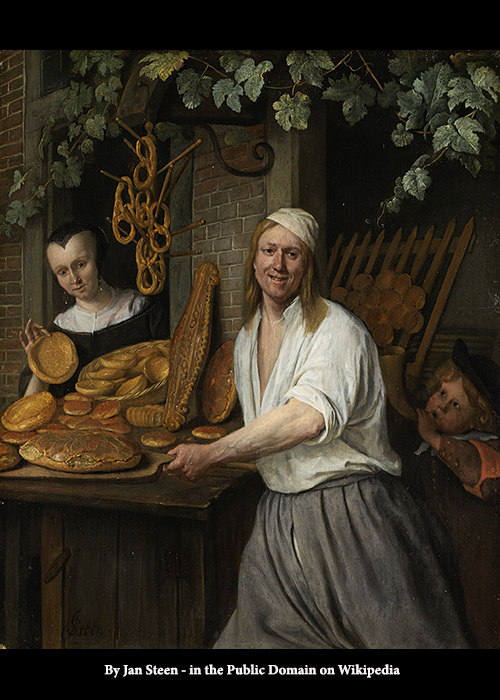There is nothing better than a crisp, crunchy, dare I add, slightly burnt pretzel – whole or in pieces. Add a bit of mustard, and we are set for the day. It is National Pretzel Day, time for a few pretzel factoids.
- As with many origin stories, the pretzel is claimed by several groups, the Italians, French, and Germans. What does seem to be the case is that they have an underlying religious bent, as might be anticipated for food created between the 7th and 12th centuries. The cross shape is meant to reflect the arm position of the devout, hands bent in prayer. An alternative explanation is that the three holes formed by the twisting represent the Holy Trinity.
- The pretzel shape was used as the symbol of bakers’ guilds.
- Whatever origin story you wish to believe, pretzels were definitely a German “thing,” and German and Swiss immigrants, the Pennsylvania Dutch, brought it to the US.
 In 1850, the first commercially produced pretzel came from Lititz, Pennsylvania, in the heart of Amish country. It was the first, but not the last, snack from Pennsylvania’s Pretzel Belt.
In 1850, the first commercially produced pretzel came from Lititz, Pennsylvania, in the heart of Amish country. It was the first, but not the last, snack from Pennsylvania’s Pretzel Belt.- The Pennsylvania Pretzel Belt lies in its southeastern region, encompassing much of the land settled by the Amish. It is the home of Hanover, “the snack capital of the word” potato chips, and all of Hershey, Pennsylvania – the “sweetest place on earth” candies. Perhaps a member of the food police would characterize it as an FDA “superfund” site.
- 80% of pretzels consumed in the US come from the Pretzel Belt.
- Freeport, Illinois, is a pretender to the pretzel crown. Located near Chicago, it fancies itself “Pretzel City, USA.” Another German immigrant, John Billerbeck, opened a bakery featuring German-style pretzels to go with the many brews being produced in Freeport. Prohibition closed the breweries and didn’t help Billerbeck Bakery’s bottom line.
- Those original Lititz pretzels were soft with a short shelf-life. Julius Sturgis, that Lititz baker, applied a bit of Amish ingenuity and thrift, reducing the water in the dough and creating a “hard” pretzel that lasts for a long, long time.
- The outer sheen and slick surface of pretzels come from the formed pretzel taking a quick bath in lye – typically sodium hydroxide. This enhances the browning of protein when heated, the Maillard Reaction.
- Pretzels languished for many years as a regional snack; each pretzel was hand folded with the best producing 40 a minute. The first automated pretzel machine was developed in Reading, Pennsylvania part of the pretzel belt. The Reading Pretzel Machine, created in 1947, was “a continuous proofer, cooker, salter, oven, and dryer,” producing 250 pretzels a minute. For comparison purposes, a typical 8-ounce bag of regular-size pretzels contains 15 minutes of hand work or 3 seconds in the Reading Pretzel Machine.
Why are we celebrating National Pretzel Day? Good question; I am not even sure it can be considered a national day, given that Pennsylvania Governor Ed Rendell declared it in 2003. That said, they remain a very tasty treat.

